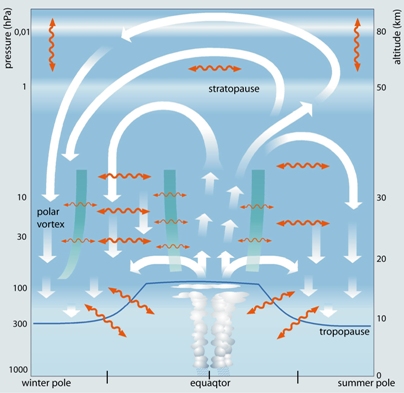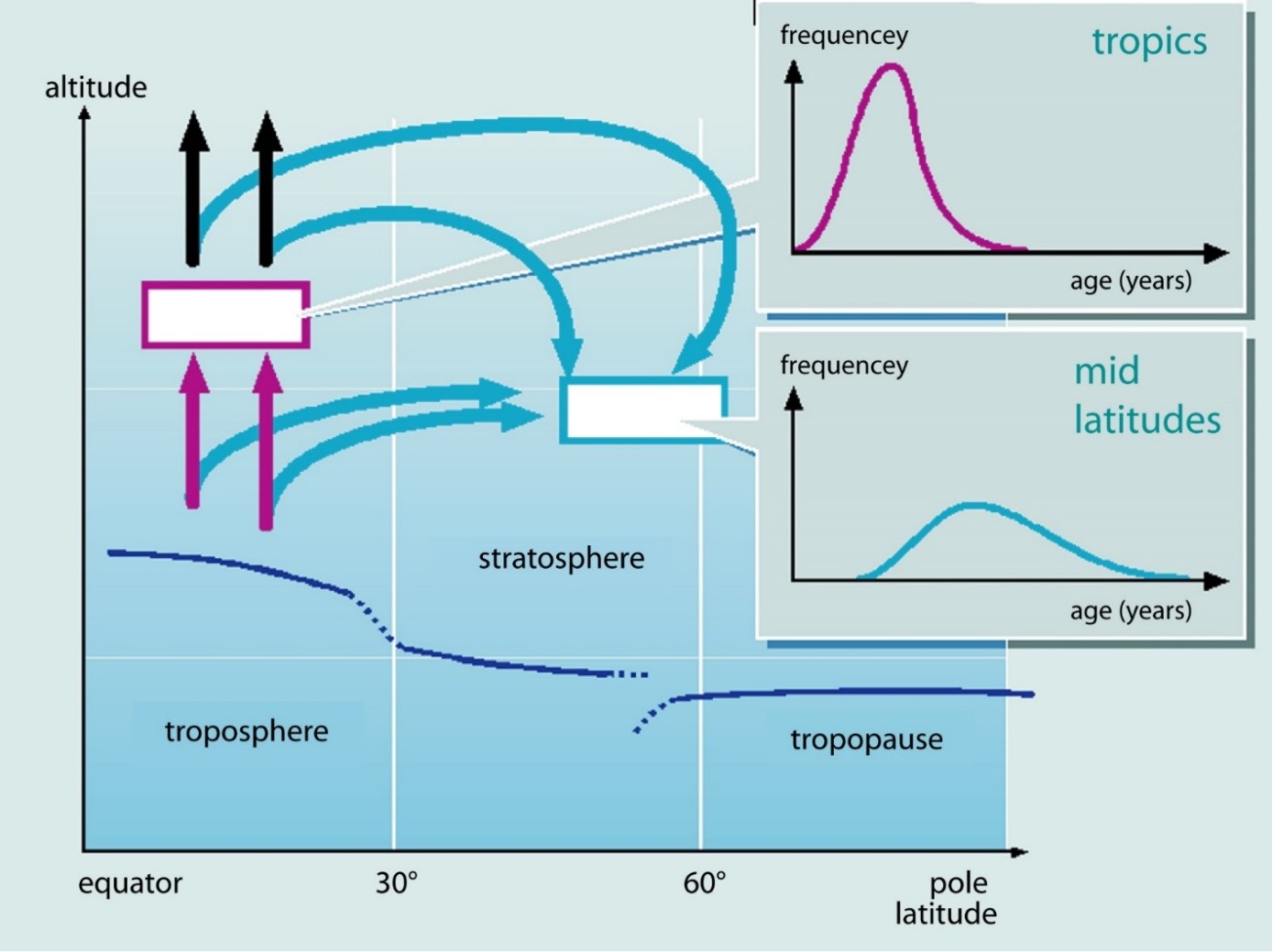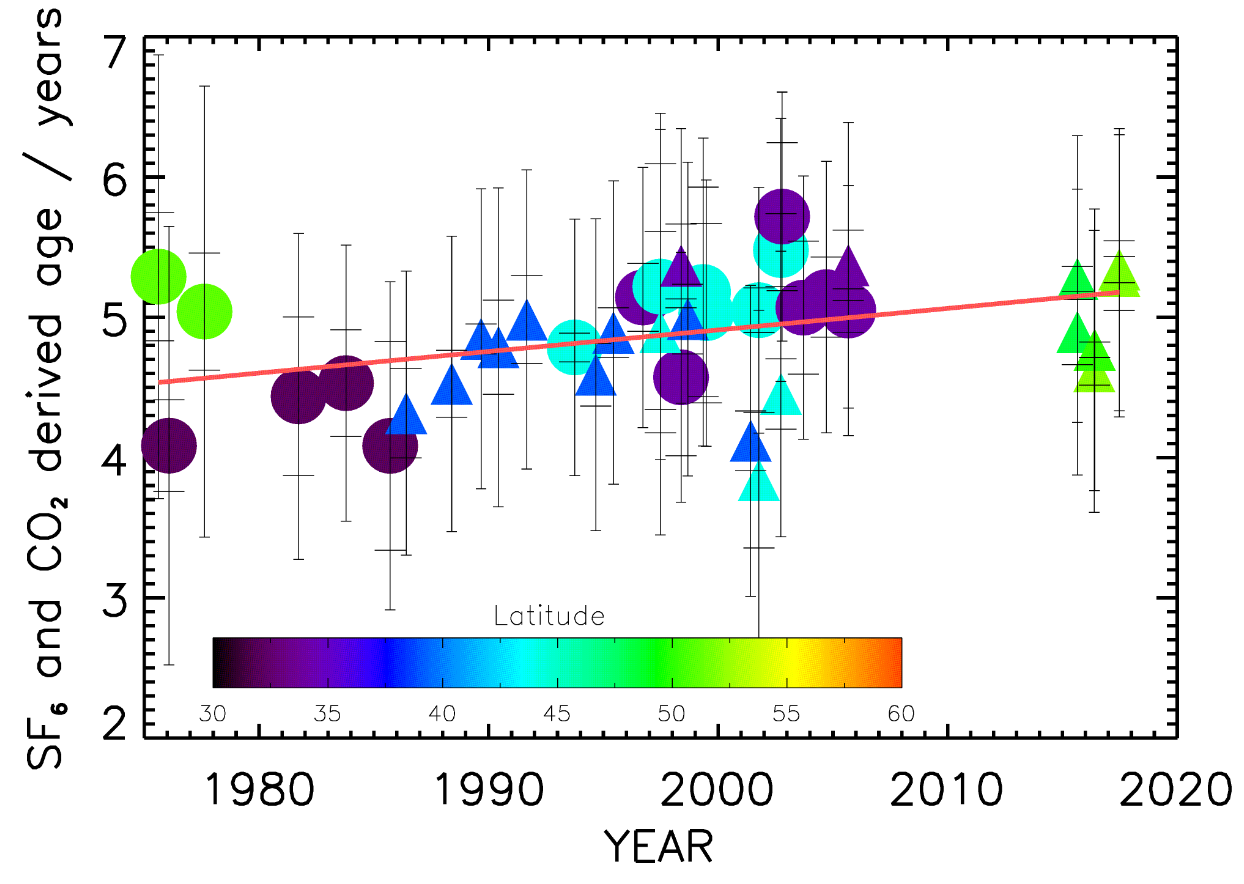The mean age of stratospheric air

Air in the stratosphere is mainly transported from the troposphere through the tropical tropopause. While zonal transport is fast in the stratosphere, meridional transport and vertical transport are much slower, with time scales on the order of years. The transport processes are always accompanied by mixing processes, so that an air parcel observed at sopme place in the stratosphere will be a mixture of air with transport pathways and timecsales, which are,however, irreversibly mixed. Due to these long transit times, stratospheric and tropospheric mixing ratios of chemically inert trace gases will differ if the gases show a temporal change in the troposphere. Two gases which fulfil these conditions (inert and tropospheric temporal trend) rather well are SF6 and CO2.
| Based on observations of these gases in the stratosphere, it is possible to determine a mean transit time, also called mean age of air. In case of non-linear growth rates some assumpotions on the distributions of transit times need to be made when deriving mean age. As mean age is an integrated transport parameter, it is a valuable tool in investigating stratospheric circulation and its long term trend. Climate models in general predict an acceleration in stratospheric tranmsport, which should be reflected in a decrease in mean age. |
|
|
|
We use both SF6 and CO2 observations for investigation of mean age, on stratospheric air. These measurements are performed by sampling stratospheric air cryogenmically, by mean oft he AirCore technique or directly (in-situ) from aircraft. We have compiled a data set spanning more than 40 years to investigate long term changes of mean age in the stratosphere. This data set shows a small but non-significant positive trend in mean age, thus not confirming the expected negative trend. |





